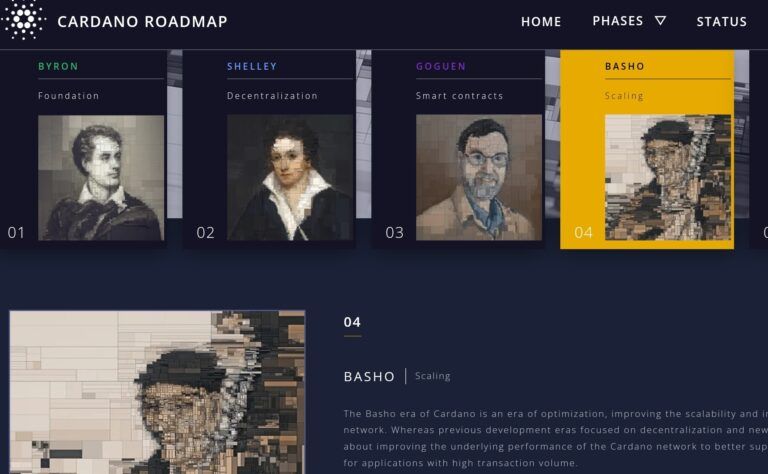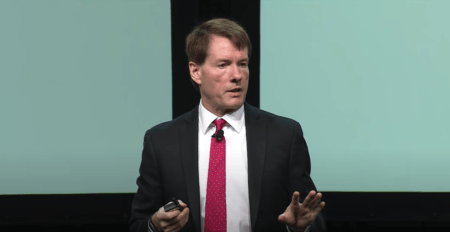Earlier this week, Duncan Coutts, who is Technical Architect for Cardano at Input Output Global (“IOG”), the company responsible for Cardano’s research and development, talked about this month’s upcoming Vasil upgrade (aka “Vasil hard fork” and “Vasil Hard Fork Combinator event”).
According to his IOG bio, Coutts is “a computer scientist and a Haskell consultant and community member” who holds a PhD in computer science and has been using Haskell for nearly 20 years. He is also “the founding partner of the Well-Typed consultancy, where he has spent a decade helping a variety of customers build applications in Haskell and making improvements to the language’s programming tools.” Coutts began working with IOG in 2016, and is “the head of engineering on the Cardano project.”
As you may know, on June 20, Nigel Hemsley, Head of Delivery & Projects at IOG, published a blog post titled “Vasil upgrade – the state of play”.
Hemsley wrote:
“The IOG engineering team is extremely close to finalizing the core work, with just seven bugs still outstanding to complete the hard fork work, with none currently ranked as ‘severe’. After some consideration, we have agreed NOT to send the hard fork update proposal to the testnet today to allow more time for testing…
“To date, we’ve managed to get through the majority (approx 95%) of our Plutus V2 test scripts. However, we still have a few outstanding items that we need to run to confirm everything is working as expected. We have determined we’ll need a few more days for this. This puts us behind schedule on our previously communicated target date of June 29 for a mainnet hard fork…
“Today, IOG and the Cardano Foundation have agreed a new target date to hard fork the testnet at the end of June. Once completed, we will then allow four weeks for exchanges and SPOs to carry out any required integration and testing work. This is only reasonable and should not be rushed. The working assumption should therefore now be a Cardano mainnet hard fork occurring during the last week of July.“
A short time afterwards, the IOG CEO made a 15-minute video to share his thoughts on the Vasil upgrade delay.
Hoskinson said:
“We’re pretty close to the target. We’re code complete, and what code complete effectively means is you probably could flip the switch and get away with it, and certain projects would do that, but what happened after the collapse of Terra (LUNA) is that I gave a directive to a lot of engineers to say we should probably measure three times and cut once given the nature of things.
“And so, additional tests were added in the Plutus suite and additional work was done for QA above and beyond what we normally do for hard forks. So, that was one dimension of the puzzle that made it more complicated.
“The other dimension of the puzzle was that after Consensus we did have an enormous amount of contact with dApp developers and other people, and there was a desire to be a bit more inclusive in the QA process and the testing process. A lot of them said ‘hey, we need several weeks on testnet to be able to play around with these things’. And at the end of the day, this is not a hard fork for the average Cardano user. The Vasil hard fork has always been a hard fork specifically for dApp developers.
“It speeds up the transaction rate with pipelining. And then all the CIPs are basically there to make Plutus smart contracts easier to write. If you’re a developer, whether you’re doing it on the mainnet or the testnet, you should have the same development environment in that respect.
“So what’s more meaningful to the community, frankly, is making sure that the testnet runs Vasil so that people who are building dAps on Cardano can deploy those dApps… We don’t anticipate that this July date is going to in any way impact the actual rollout of all the dApps have been waiting for Vasil because now they have a testing environment to do that...
“July is not too far off, you know, and all things considered, it’s kind of in an acceptable zone in my view. It’s a little frustrating because I really wanted to make sure that we got something in June, but getting it on the testnet I think is good enough for the developers because they’re the primary constituent here, and that’s not going to slow down ecosystem growth.“
Well, on Tuesday (July 5), journalist Darren Parkin at City A.M. published an interesting interview with Duncan Coutts.
When asked about the Vasil upgrade, which is expected to go live on the Cardano mainnet by the end of this month, Coutts had this to say:
“We’re thrilled about the Vasil upgrade, and we hard forked the Cardano Testnet on Monday this week in preparation.
“Although ‘hard fork’ is probably a misleading term when talking about how we do updates. IOG’s unique hard fork combinator means Cardano continues through the hard fork without a “break”, and that there’s no need to stop block production – this ensures smooth upgrades to the network. There’s no core network disruption. It’s a rather special piece of technology.
“The Basho era of the Cardano roadmap is all about optimizing and scaling Cardano to better support Defi applications and facilitate growth and adoption, and the Vasil enhancements are a key element. With over 1000 projects building on Cardano and counting, and over five million native tokens created on the blockchain, we want to make sure we’re preparing for Cardano’s growth appropriately. The improvements that Vasil is making to Cardano’s scalability are a critical part of preparing for continuing growth.
“A key scalability-focused element of Vasil will be the introduction of ‘diffusion pipelining’. This will allow for continued network tuning and optimisation, including an increase in block size, ensuring we’re scaling Cardano as much as possible. The hard fork on the testnet is a key step towards the fork on the mainnet, and we’re keeping the community updated on our progress as we work towards that milestone.”









